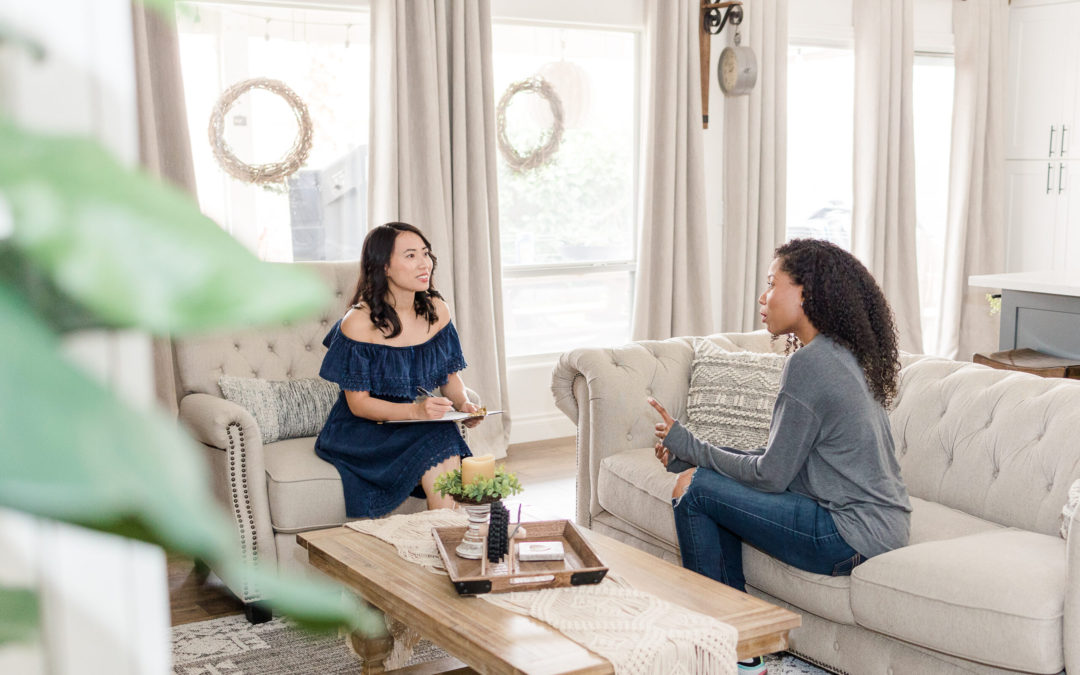If you’re someone who stays pretty up to date on social media, you’ve probably come across the concept of Attachment Theory or knowing your “attachment style.”
You may have heard or seen the phrase tossed around and wondered what exactly people were referring to when they talked about their “attachment style”.
Attachment theory is most commonly referenced when relationships are involved.
A simple way to define one’s attachment style is a pattern of behaviors that an individual experiences in a relationship.
Depending on how this individual was nurtured from birth, these patterns can range from being perceived as “clingy” in a relationship, or oftentimes finding yourself drifting away from relationships in general.
If either of these sound like you, keep reading. There’s a little more that goes into it.
Attachment theory was coined in the late 20th century. John Bowlby, a psychoanalyst who began by studying the interactions between mother and infants, discovered that attachment begins to form when a child is born.
A caregiver’s consistency in meeting a child’s needs is what determined the child’s ability to believe and trust that their needs would be met in the future. This ability to attune over time developed a child’s tendency to either be trusting or distrusting of their interactions with others.
This is the basis of how attachment styles today are formulated.
The four categories of attachment are:
Secure, Anxious, Avoidant, and Disorganized.
Here’s a breakdown of what these look like and how they are formed.
Individuals that fall into the secure attachment category show up in relationship with healthy amounts of confidence and security within the relationship.
Secure attachment often looks like:
- Feeling confident in oneself
- Having the ability to manage their own emotions
- Maintaining appropriate boundaries in relationships
- Engaging in healthy amounts of vulnerability/ sharing within relationships
The secure attachment style is formed by having consistent, responsive emotional care from a caregiver starting during infancy and throughout childhood and adolescence. This has taught the individual over time that their needs will be addressed.
Because of this, securely attached individuals are able to be present and comfortable in relationships.
For those who are not securely attached- moving into secure attachment is possible.
The remaining three categories of attachment all make up what is known as “insecure attachment” and are formed by inconsistent emotional care from their caregivers.
Anxious attachment style at its core is categorized by a fear of abandonment. Individuals with an anxious attachment style tend to have lower self-esteem and often struggle with the feeling of “not being enough.”
Anxious attachment often looks like:
- Being described by others as “clingy”
- Experiencing difficulty regulating their emotions, but will share them constantly
- Romanticizing the idea of a relationship/ romanticizing their partner
- Requiring a lot of reassurance
Let’s see how this may actually look in a relationship:
Clara experiences a lot of frustration when it comes to dating and being in relationship. Clara describes having little to no issues being vulnerable when first dating someone. In fact, she has been told that she shares “too much too soon” and it feels a bit overwhelming to her potential partners. Clara describes developing intense feelings for her potential partners very quickly, and even finds herself fantasizing excessively about the potential relationship. When Clara gets upset, she feels as though it is necessary to express it, and finds it difficult to concentrate if she doesn’t.
She often worries that if who she is dating is not texting her back immediately, they “must have found someone else” or have deemed Clara “not good enough”. Clara struggles to maintain her sense of self when she is involved in a relationship and her friends have even joked that she “goes ghost” when she starts dating someone. In reality, Clara struggles to maintain her own boundaries when dating and will oftentimes put her own needs and desires on the backburner to put all of her energy into dating.
Clara struggles with her own self-esteem, and finds it difficult to see herself as “worthy” outside of the context of a relationship. Even in the relationship, she feels self-conscious and has a constant fear that her partner will leave her.
Sound familiar? Don’t worry- there’s an explanation for this.
People who experience their caregivers as emotionally inconsistent throughout infancy, childhood and adolescence develop an anxious attachment style. The inconsistency is often internalized, and the child begins to believe that they are the reason they are not receiving care.
An anxiously attached individual may be hypercritical of themselves and believe that they are defective. Thus drawing the conclusion that this is why others are not able to meet their needs.
They begin to minimize themselves and their needs early on in the relationship to meet the needs of their partners, which often results in unhealthy boundaries.
Anxiously attached individuals may appear as emotionally reactive, and this may drive their partner away. However, this behavior is typically their way of trying to get their partner’s attention.
It usually backfires and ends up causing more conflict in the relationship.
Another type of insecure attachment is Avoidant Attachment.
Avoidant attachment style at its core is also the fear of abandonment. However, while anxious attachment encourages people to “cling” avoidant attachment encourages people to push away or avoid to keep from experiencing abandonment.
This helps the avoidant person avoid experiencing pain from disappointment when someone doesn’t meet their needs.
People who are avoidantly attached tend to:
- Struggle with vulnerability
- Spend a lot of time alone or identify as a “loner”
- Have difficulty recognizing emotions and will avoid sharing them
- Be seen as “overly independent”
Let’s see how this may actually look in a relationship:
José is desiring to be in a relationship, but seems to be falling into the same pattern that results in all of his attempts at relationships ending. José goes through periods of finding a real interest in dating. In fact, he will put himself out there on dating apps, and may even approach someone he finds attractive and initiate conversation. The beginning of anything feels great for José- until deeper feelings get involved. When Jose starts exclusively dating someone that’s when “everything tends to go wrong” – in his words.
He finds it annoying when his partners are open with their emotional expression. To José, feelings aren’t helpful- but solutions are. Because of this, José tends to shy away from more personal conversations, and feels like he needs to maintain a sense of privacy. His potential partners are drawn in to Jose’s accommodating nature at first, but notice that once actual feelings come involved, they feel José giving an emotional stiff-arm.
Jose doesn’t want to continue the same patterns- but he also doesn’t want to have to share his feelings with others.
Sound familiar? Don’t worry- there’s an explanation for this.
Individuals that experience their caregivers as emotionally inconsistent throughout infancy, childhood and adolescence develop an avoidant attachment style.
They see the inconsistency in care as a microcosm of how interactions with people feel like, and learn early on “I can’t trust others- I’m more safe by myself”.
Individuals with avoidant attachment actually desire relationship; and they also share with anxious attachment in that they tend to have lower self esteem.
The key difference is, their low self-esteem drives them to keep others out, so they won’t experience disappointment when the individual leaves.
The last type of insecure attachment that we will touch on today is disorganized attachment.
Disorganized attachment is the most rare of the attachment styles, and is commonly confused as “putting anxious and avoidant together.”
In reality, disorganized attachment is in a category all its own.
Taking after its name, disorganized attachment looks like chaos. There is no exact pattern of behavior that an individual may follow with disorganized attachment. Some common features of disorganized attachment look like:
- Fear of emotional closeness
- Volatile responses
- Inconsistent boundaries
Individuals who experienced physical and/ or emotional abuse from their caregivers at young ages are more likely to develop a disorganized attachment style.
Experiencing a fear of their caregiver, the individual that was expected to provide nurture, has taught the individual that nobody can be trusted, and thus, individuals with disorganized attachment avoid connection and have difficulty maintaining any kind of relationships.
**Because of the nature of disorganized attachment, I would highly recommend the healing work starting with a therapist. Exploring past abuse/ neglect by yourself or with someone that is not trained can be scary and overwhelming, and you will find more support with a trained professional.**
Moving into Secure Attachment 
If you are reading this and think you fit the descriptions of insecure attachment styles or may be in a relationship with someone who does, you may be wondering, “well now what?”
The good news is, it is possible to move towards or into a secure attachment style- it just takes some help (the best help is from a qualified mental health professional) and intentionality around doing so.
The different forms of insecure attachment all have something in common- there was an inconsistency or breach of trust during a crucial developmental period.
Moving into secure attachment only requires one- yes, just one relationship that can begin to shift the narrative that your attachment style consistently reminds you of.
This may look like, for an anxiously attached individual, forming healthy friendships that can validate the anxiety, while at the same time, challenging them to form healthy boundaries for themselves.
Or for someone with avoidant attachment- forming a friendship that provides safety, while also showing them that vulnerability does not always result in pain- it can deepen the relationship and lead to a healthier, stronger bond between you and the individual.
Lastly- one of the best ways to work on moving into a secure attachment style is to begin to do the work with your therapist.
 The therapy process works by fostering attachment with an individual- in this case, it’s a licensed professional.
The therapy process works by fostering attachment with an individual- in this case, it’s a licensed professional.
The beauty of therapy is that it is relational- meaning, the work that you are doing with your therapist forms a relationship that foundationally builds safety.
Throughout this safety, an individual has the chance to explore what life events may have occurred that have fostered an insecure attachment style. Along the way, you learn how to navigate through your old patterns, and work towards building new, secure attachment.
We are here to help our clients learn more about and work through attachment wounds, so they can show up in the world as their most authentic forms of themselves. Let us help you start or even continue your healing process.
The Worth, Wisdom and Wellness Center provides Trauma & EMDR therapy, Therapy for Perfectionism and Low Self-esteem, Therapy for Anxiety and Depression, and Faith-Based Therapy to Black women and Women of Color. You don’t have to try to heal from childhood wounds by yourself. We are here to help.
If you are located in the state of Georgia and interested in starting your healing journey, you can follow any of the steps below.
- Contact us to schedule your first appointment and learn more about our services.
- Review our About Us page to learn more about our trauma trained providers.
- Review our FAQs page to learn more about therapy at our center.
We look forward to being a part of your healing journey.

